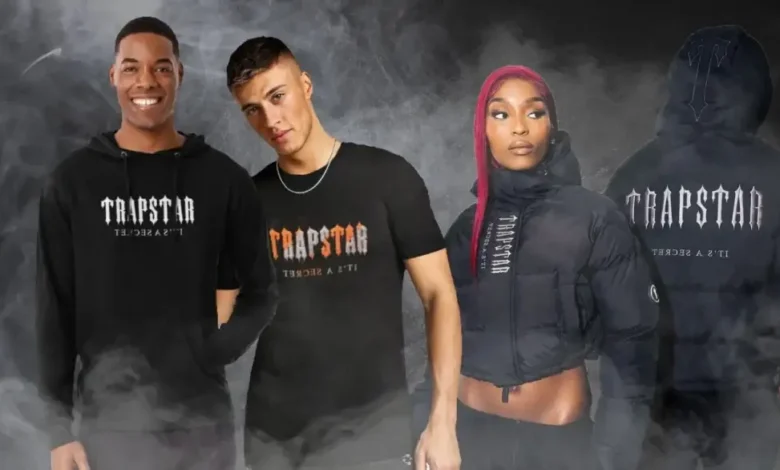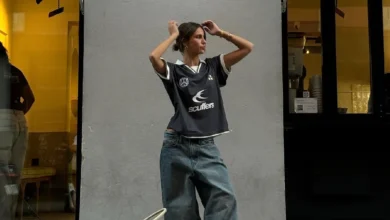Trapstar Bluza: The Intersection of Streetwear and Cultural Statement

In the advancing scene of worldwide streetwear, few brands have carved out as unmistakable and compelling an personality as Trapstar. Established profoundly in the social texture of London’s urban scene, Trapstar has risen above its roots to ended up a image of rebellion, imagination, and community. One of its most significant offerings — the Trapstar bluza (the Clean term for sweatshirt or hoodie) — stands not fair as a piece of attire but as a canvas of social expression.
The Roots of Trapstar
Trapstar was born in West London in 2006, established by Mikey, Lee, and Will — three companions who started by printing t-shirts casually for companions and nearby specialists. Their tasteful drew intensely from the coarse substances of London life, underground music, and the combination of road societies, which included grime, hip bounce, and punk impacts. What made Trapstar stand out was not fair its visual dialect but its ethos: the thought that “it’s a mystery” — typified in their motto — implied that wearing Trapstar was both a explanation and a gesture to those “in the know.”
Fast forward about two decades, and the brand is a backbone in the closets of celebrities, competitors, and tastemakers around the world, from Rihanna and Jay-Z (who afterward contributed in the brand) to football stars and influencers over Europe. Among the numerous things it produces — from coats to caps — the Trapstar bluza reliably positions as one of its most famous garments.
The Plan Dialect of the Trapstar Bluza
At its center, the Trapstar bluza distills the brand’s crude tasteful into a wearable, utilitarian outline. Ordinarily made from heavyweight cotton or mixed downy, the bluza is both vigorous and comfortable, planned to withstand both urban wear and colder climates. In any case, it is the design and enumerating that really set the bluza apart.
Most Trapstar bluzas highlight strong, forceful typography — the brand’s gothic symbol angled over the chest or decorated on the back. A few cycles explore with slope blurs, metallic wraps up, or camouflage overlays, reflecting impacts from 90s rave culture, UK penetrate music, and military utilitarianism. The “Chenille Decoded” bluza, for illustration, highlights finished, fluffy lettering that includes a material component to the graphic-heavy hoodie.
Colorways extend from stark monochromes (dark, dark, white) to electric blues, corrosive greens, and searing reds — all carefully chosen to reflect both regular patterns and the perpetual temperament of urban rebellion.
The Trapstar Bluza as a Status Symbol
In streetwear, shortage breeds attractive quality, and Trapstar has aced this energetic with its constrained drops and select collaborations. The bluza frequently offers out rapidly on discharge days, with exchange costs now and then tripling their unique retail esteem on stages like StockX or Grailed.
Wearing a Trapstar bluza means more than fair mold sense; it means participation in a more extensive social discussion. For numerous adolescents in London and past, Trapstar (and by expansion the bluza) serves as a marker of personality — one that gestures to music, battle, and desire. The article of clothing as often as possible shows up in music recordings, on-stage exhibitions, and indeed in casual road photography, cementing its nearness as more than unimportant fabric.
Global Reverberation and the Clean Market
Interestingly, Trapstar’s impact has extended well past the UK, with outstanding footing in nations like Poland, where streetwear culture proceeds to flourish. The term “bluza” itself reflects how Clean shoppers and tastemakers have grasped this piece, coordination it into a burgeoning scene that mixes neighborhood rap, skate culture, and fashion-forward aesthetics.
Polish streetwear devotees frequently prize the Trapstar bluza for its intensity and realness — characteristics that reverberate with a era adjusted to both Western impacts and their claim localized social streams. It’s not unprecedented to see Trapstar bluzas combined with slim-fit cargo pants, chunky shoes, or vintage plane coats in Warsaw or Kraków, mixing UK road legacy with Central European swagger.
Sustainability and Future Directions
In later a long time, Trapstar has made unobtrusive shifts towards more economical generation, with higher quality materials and longer-lasting article of clothing development. Whereas still solidly established in its defiant DNA, the brand recognizes the cutting edge consumer’s developing request for moral design. The bluza, in this setting, is advancing not fair stylishly but in terms of craftsmanship.
Looking ahead, future cycles of the Trapstar bluza may incline into eco-friendly textures, upcycled illustrations, and secluded plans, as streetwear as a entirety starts to figure with its natural footprint.
Conclusion
The Trapstar bluza is more than fair a sweatshirt. It typifies an ethos of resistance, a celebration of road culture, and a worldwide exchange that ranges from West London domains to Warsaw’s bustling roads. Whether worn as a design articulation, a identification of having a place, or a gesture to underground music developments, the bluza stands tall in the swarmed world of streetwear.
As Trapstar proceeds to advance and grow, the bluza remains a immortal staple — a piece of clothing where fashion meets story, and where culture meets cloth.





